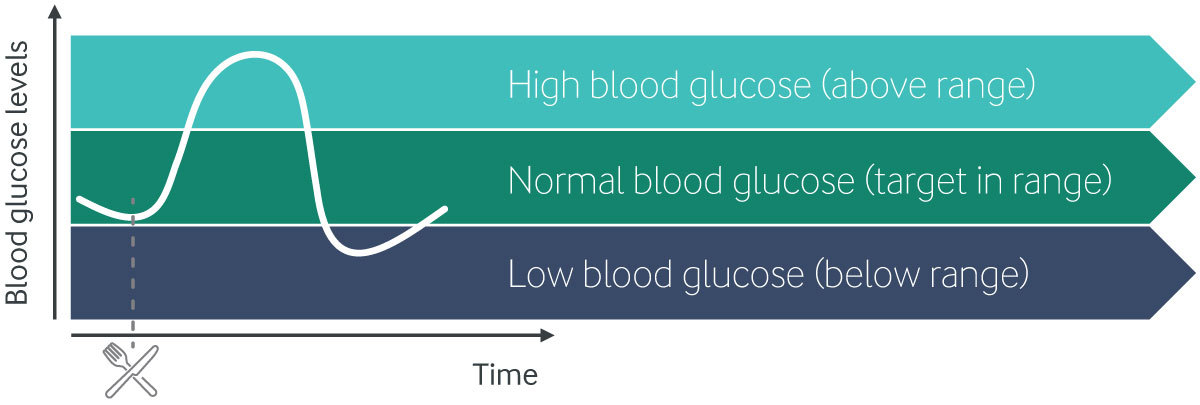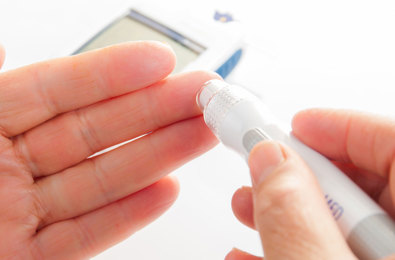Diabetes is a growing global epidemic. Today, around 537 million adults live with the condition1 – equivalent to one in every 10 adults. Almost half of them are undiagnosed, bringing an increased risk of diabetes-related health complications, such as chronic kidney disease.
Lifestyle management of type 2 diabetes focuses on physical activity, weight loss and diet. At Arla Foods Ingredients, we have investigated the dietary approach by studying the effect of whey protein on glucose regulation after a meal.
Managing blood glucose fluctuations
For people with diabetes, fluctuations in blood glucose levels are normal, both after a meal and throughout the day. However, if blood glucose levels are too high for too long, the risk to long-term health and quality of life is increased. For this reason, the recommendation is that blood glucose levels should be below 5.5 mmol/L during fasting periods and below 7.8 mmol/L for at least 90 minutes after a meal. The key to successful blood glucose regulation is to reduce periods of hyperglycaemia (too high blood glucose levels) and hypoglycaemia (too low blood glucose levels).
Figure 1 shows the effect of eating a meal on blood glucose values.

In collaboration with Newcastle University2,3 in the UK, we have shown that a pre-meal shot containing whey protein can reduce the blood glucose peak in people who are healthy, overweight or diagnosed with type 2 diabetes. The studies have both found an acute improvement following a single meal on one day and a similar effect at each main meal consumed over a week.
Continuous interstitial glucose values were measured in people with type 2 diabetes when they consumed a pre-meal, whey protein shot or a placebo prior to three daily main meals over seven days3. The study showed that people who consumed whey protein spent two hours less in hyperglycaemia over a 24-hour period, increasing the amount of time spent with a healthy blood glucose level.
Mechanistically, the pre-meal consumption of whey protein reduced postprandial blood glucose levels by enhancing beta-cell function and reducing insulin clearance4.
In a qualitative interview study5, high tolerance and adherence among the participants were observed. When asked about their opinion of the whey protein shot, study participants stated that they found it palatable and easy to transport and that it did not make them feel self-conscious. Overall, then, the whey protein shot was well perceived, compliance was high and there were no gastrointestinal side-effects. All these parameters are important to compliance and safety.
At Arla Foods Ingredients, we provide high quality, whey proteins under the Lacprodan® brand name. The range includes whey protein isolates, concentrates and hydrolysates.
References:
- IDF Diabetes Atlas 2021 – 10th edition, https://diabetesatlas.org/
- Smith et al. Front Endocrinol (Lausanne). 2021 Jun 18;12:696977. The Postprandial Glycaemic and Hormonal Responses Following the Ingestion of a Novel, Ready-to-Drink Shot Containing a Low Dose of Whey Protein in Centrally Obese and Lean Adult Males: A Randomised Controlled Trial
- Smith et al. BMJ Open Diabetes Res Care. 2022 May;10(3):e002820. Thrice daily consumption of a novel, premeal shot containing a low dose of whey protein increases time in euglycemia during 7 days of free-living in individuals with type 2 diabetes
- Smith et al. J Clin Endocrinol Metab . 2023 Feb 3;dgad069. doi: 10.1210/clinem/dgad069. Pre-Meal Whey Protein Alters Postprandial Insulinemia by Enhancing β-Cell Function and Reducing Insulin Clearance in T2D
- Ashley, Kirsten et al. “Identifying Behavioural Determinants to Uptake and Adherence to a Whey Protein Supplement for the Management of Type 2 Diabetes: A Qualitative Interview Study.” Nutrients vol. 14,3 565. 27 Jan. 2022, doi:10.3390/nu14030565






